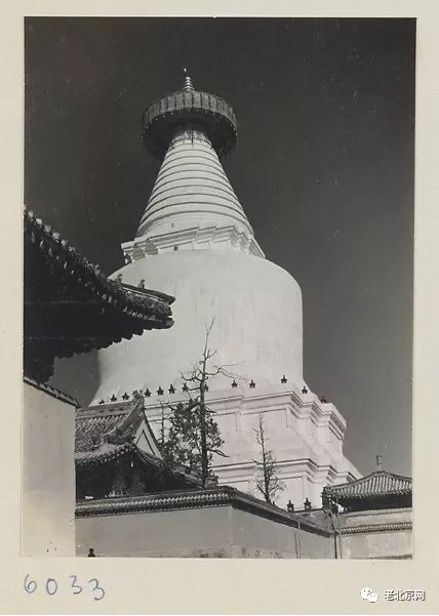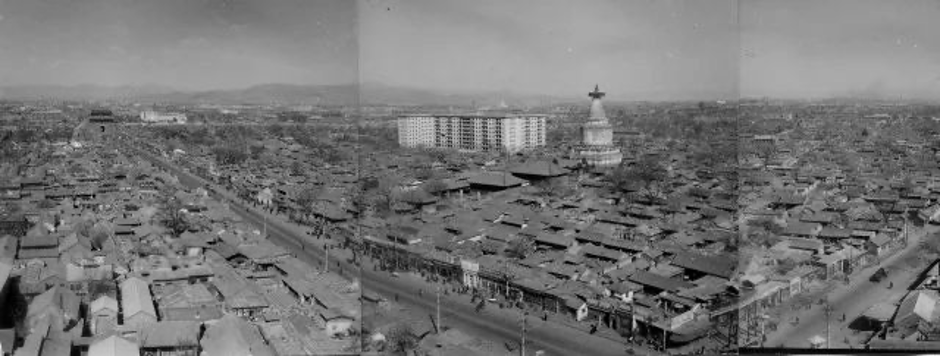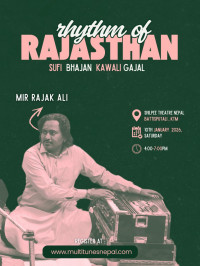Culture & Lifestyle
Life and Legends under the Miaoying Temple
Having survived the Cultural Revolution, the White Dagoba, which was designed by the Nepali architect Arniko, is the oldest and largest Tibetan Buddhist shrine in China and perhaps the last remaining building of the Yuan Dynasty in Beijing today.
Built during the Yuan Dynasty, the Miaoying Temple is commonly known as the White Dagoba Temple. In 1271, Arniko, a master craftsman from Nepal, was the key architect in the construction of the White Daboga which became one of the most important projects under Kublai Khan’s rule. The Temple is tucked inside Fuchengmen Inner Street, Xicheng District in Beijing and was once named Dashengshou Wan’an Temple (大圣寿万安寺) and was later renamed in the Ming Dynasty to the name we know today. The once-functioning Gelug monastery is now a museum for the public with an entrance fee of 20 RMB and free for Nepali citizens.
In 1961, the Chinese State Council pronounced the “Miaoying Temple and the White dagoba” as one of the first batches of national key cultural relics protection units. Having survived the Cultural Revolution, the White dagoba is the oldest and largest Tibetan Buddhist dagoba in China and perhaps the last remaining building of the Yuan Dynasty in Beijing today. White Dagoba today stands as a glorious heritage and a shining beacon of centuries-old Nepal-China relations.
An urban legend about the White Daboga
The temple consists of a four-story hall and a White Dagoba. The Dagoba is 50.9 meters high, and the tower base is a three-layer square-angled throne. What is particularly striking is that there are seven iron hoops surrounding the plump bowl-shaped dagoba.
These seven iron hoops are wide in circumference and several meters above the ground, which at that time of its construction was beyond the reach of ordinary manpower. Later generations and even those today people are often puzzled as to why a white dagoba requires such gigantic iron hoops that don’t look aesthetic, and how could Arniko and his subjects have carried it to the top.
After the White Dagoba was built, the breeze blew, and the bells sounded clear and melodious. The tintinnabulation of the bells brought peace to the people around. Locals would burn incense and pray to Buddha for peace.
One day, an unprecedented earthquake occurred in the city of Beijing. The smoke and dust from the collapsed houses rose and covered the sky in an instant. People were in panic and running unsteadily, and had to roll and crawl. The earthquake had caused several large cracks in the White Dagoba, which looked as if it could fall apart at any moment. The neighbouring houses would anxiously watch the dagoba from a distance as they had nowhere to evacuate. The dagoba was so big and old that everyone believed that even an imperial decree from the emperor couldn’t save it for them. The once soothing sound of the bells which swayed with the wind now became an alarm for everyone to run.
On a hot summer morning, while locals kept watch on the dagoba instead of taking shade, news spread about a master who could use cramp to mend crockery in the area. The earthquake’s impact had left water tanks, tiles, basins and daily household items damaged and people were eager to fix them all. However, the master made a fuss about repairing anything, leaving the locals frustrated. Just then, the master took out a pot and calmly filled it with shredded tobacco and requested for fire as he told the locals that his real purpose of visiting this place was to repair the cracks of the White Dagoba.
Everyone was stunned. The old man took a few puffs of dry cigarettes, knocked off the ash, and then filled the pot again. This time, someone immediately helped him light the cigarette. After smoking three pots in a row and drinking tea he said “just get me my fire and tea on time and no matter how difficult it is, I will fix the White Dagoba”. He also asked the locals to make a few big iron hoops and put them at the bottom of the tower and not worry about the rest.
In the following days, the old man appeared at the iron-making site on time every day, instructing everyone on how to make iron hoops. As everyone was eager to repair the dagoba, no one asked him about his origin. By the time the iron hoops were ready, it was already autumn, and it was getting dark early. A wealthy household even sent over a dozen baskets of good liquor for the people who had been busy for a long time to drink and enjoy. After having a full meal, everyone went back to their respective homes to rest early.
At dawn the next day, everyone looked up and saw seven iron hoops tightly and evenly placed on the White dagoba. People started to talk about it: there was no movement last night, not even the minimum scaffolding, how could it be fixed? When it was time for lunch, everyone prepared tableware for the old man, but the old man was nowhere to be found. Speculations quickly emerged of the old man being a reincarnation of Lu Ban (鲁班), who specializes in solving the problems of ordinary people. They all thought nobody else had such a great ability to add iron hoops several feet thick to the White dagoba!

Hidden and preserved history on the White Dagoba
After the Tangshan earthquake in 1976, in July of 1978, the Chinese National Cultural Heritage Administration carried out comprehensive repairs of the White Dagoba. During the repairing process, many cultural relics such as scriptures and boxes were found on the top of the White Dagoba in the small gilded area. It was found that these items were placed in the 18th year (1753) of Emperor Qianlong of the Qing Dynasty.
Among the items were the "Heart sutra" handwritten by Emperor Qianlong, a copy of the Tibetan "Zunsheng Mantra"; three bronze statues of Buddha, each 20 cm high; praying beads, four silver bottles of currency of each dynasty and generation; a whole carved rosewood statue of Guanyin, with a small round bowl below the statue containing 33 relics; a finely carved small red gold relic Longevity Buddha, five cm in length, more than forty rubies inlaid on the whole body; a set of five-sided Buddha crowns and applique brocade cassocks, decorated with more than a thousand pearls, coral beads, sandalwood beads and rubies.
Another interesting item discovered in the gap on the top of the tower was a piece of yellow paper worn-out over time. The words on the paper read, “The dagoba was repaired in the year which coincided with the Sino-Japanese War. On 29th June, the Japanese army occupied Peking. Since then, the war has spread throughout the country. Airplanes and artillery bombs, rape and looting are everywhere and lives have been lost.”
“The war is still fierce in many provinces. The rise and fall of the country is difficult to determine. Ascending the ancient dagoba, chasing the past and recalling the present, I feel very grateful! A few words are briefly mentioned to inform future generations as a permanent memorial.”
The note was signed by a person named Luo Dejun informing of the invasion of China by the Japanese army. Considering the previous repair of the White Dagoba in 1937 by the government of the Republic of China, the note was most likely placed during the repairs.
Temple fairs at the Miaoying temple
According to the archives of the Second Historical Archives of China, in 1913, the Lama in charge of White Dagoba Temple asked the Mongolian and Tibetan affairs bureau for the rent of the temple to finance repairs, which was approved within five or six days to attract investment and collect rent. As a result, the White Dagoba Temple fair began.
The White Dagoba Temple fair used to be held every month on the 5th and 6th days of the lunar calendar. In 1922, it changed to the 5th and 6th days of the solar calendar.
The White Dagoba Temple Fair at the temple and the surrounding alleys attracted vendors and entertainers making the atmosphere lively.
The White Dagoba Temple fair was regarded as a temple market. Because, when it started, there were no religious activities in the temple, and customers and visitors didn’t drop by to pray, but purely for shopping and entertainment. In the “Peking Temple Fair Survey”, the White Dagoba Temple covers an area of about 17,778 square metres, with 2,666 square metres in the temple area and 7,777 square metres outside. It ranked third among the "Five Temple Fairs", with a total of 735 stalls.
From 1958, the crowd at the White Dagoba Temple gradually declined. In 1997, the Beijing Municipal Government put forward the slogan "Open the ‘mountain gate’ and reveal the White Dagoba"(“打开山门, 亮出白塔”), demolishing the market, and rebuilt the gate and temple buildings. During the three-year turbulent period from 1958 to 1961, the temple fairs were suspended and they have not resumed since.
Today, the White dagoba stands in the temple, but no temple fairs are held. With the exploration and implementation of the "White dagoba Regeneration Plan" (白塔寺再生计划) in recent years, the hutongs (alley) under the White dagoba underwent renovation. Although the once bustling temple fair is now long forgotten, the White Dagoba, now 750 years old, still stands firm and contributes largely to the cultural and historic significance of Beijing City.

Translated by Raunab Singh Khatri and Aneka Rebecca Rajbhandari for The Araniko Project.
This is a summarized version of an article published on ‘Xúxú dào lái huà Běijīng’, a WeChat page writing on various aspects of Beijing. For complete translation, please visit thearanikoproject.substack.com




 12.12°C Kathmandu
12.12°C Kathmandu












%20(1).jpg&w=300&height=200)

